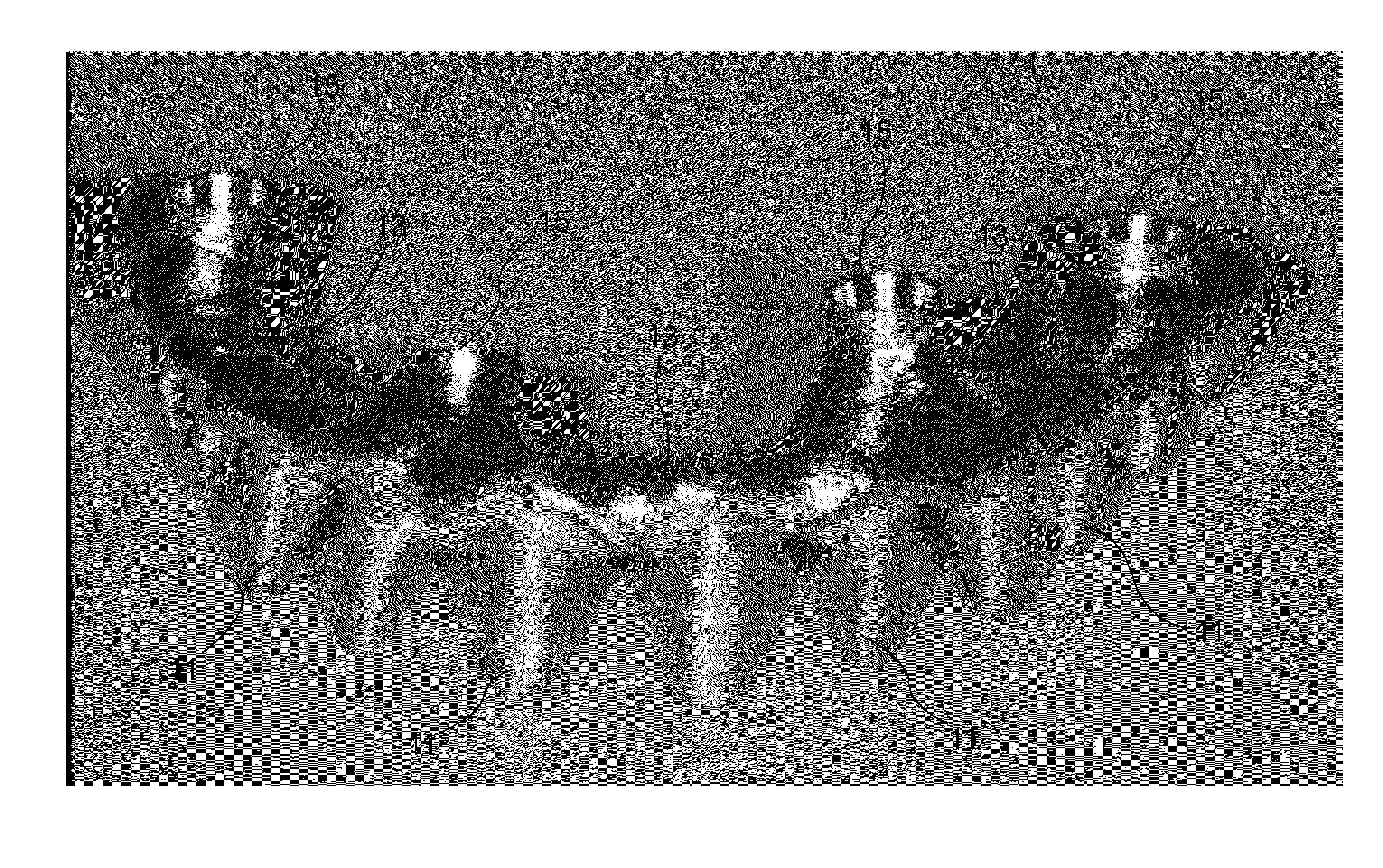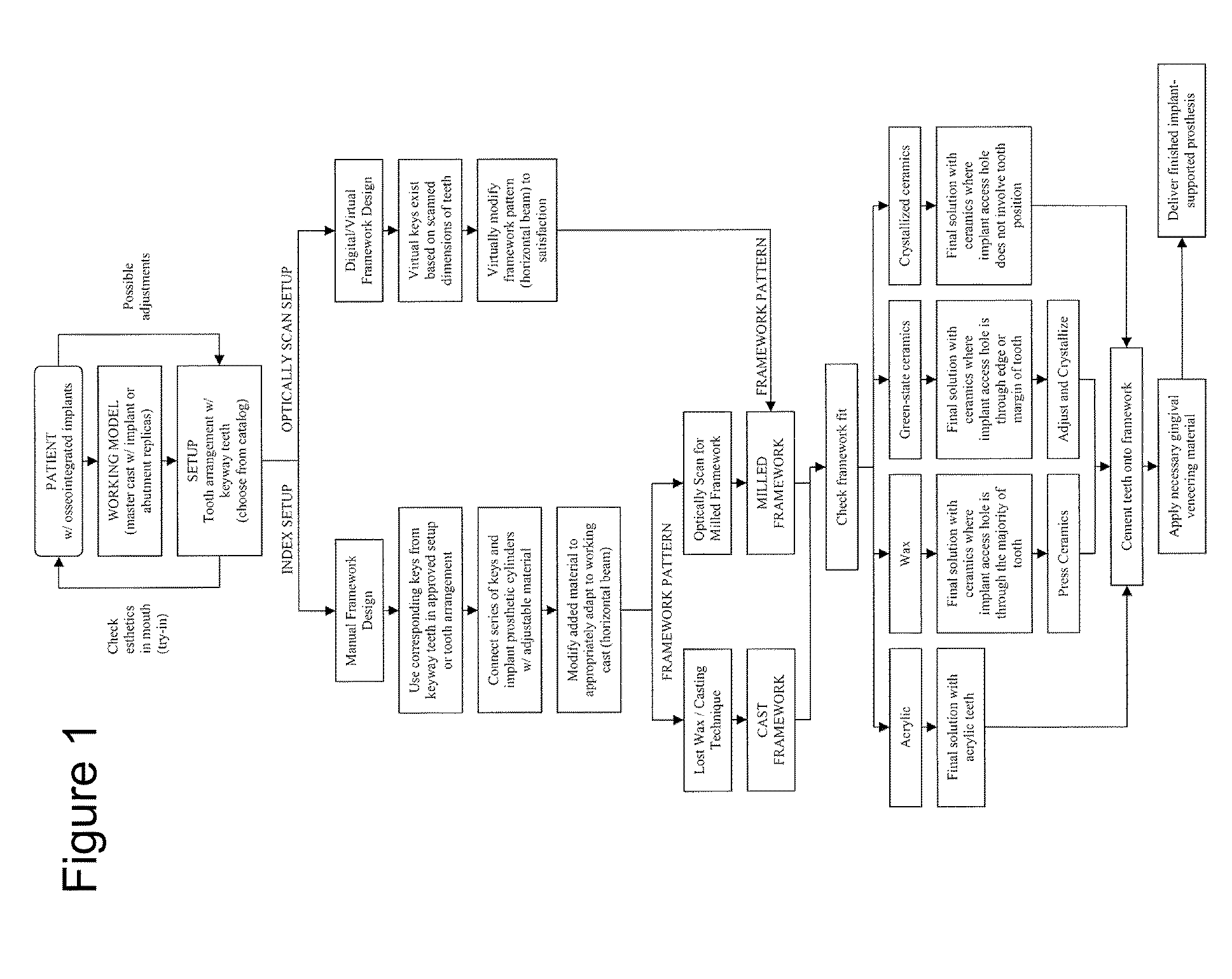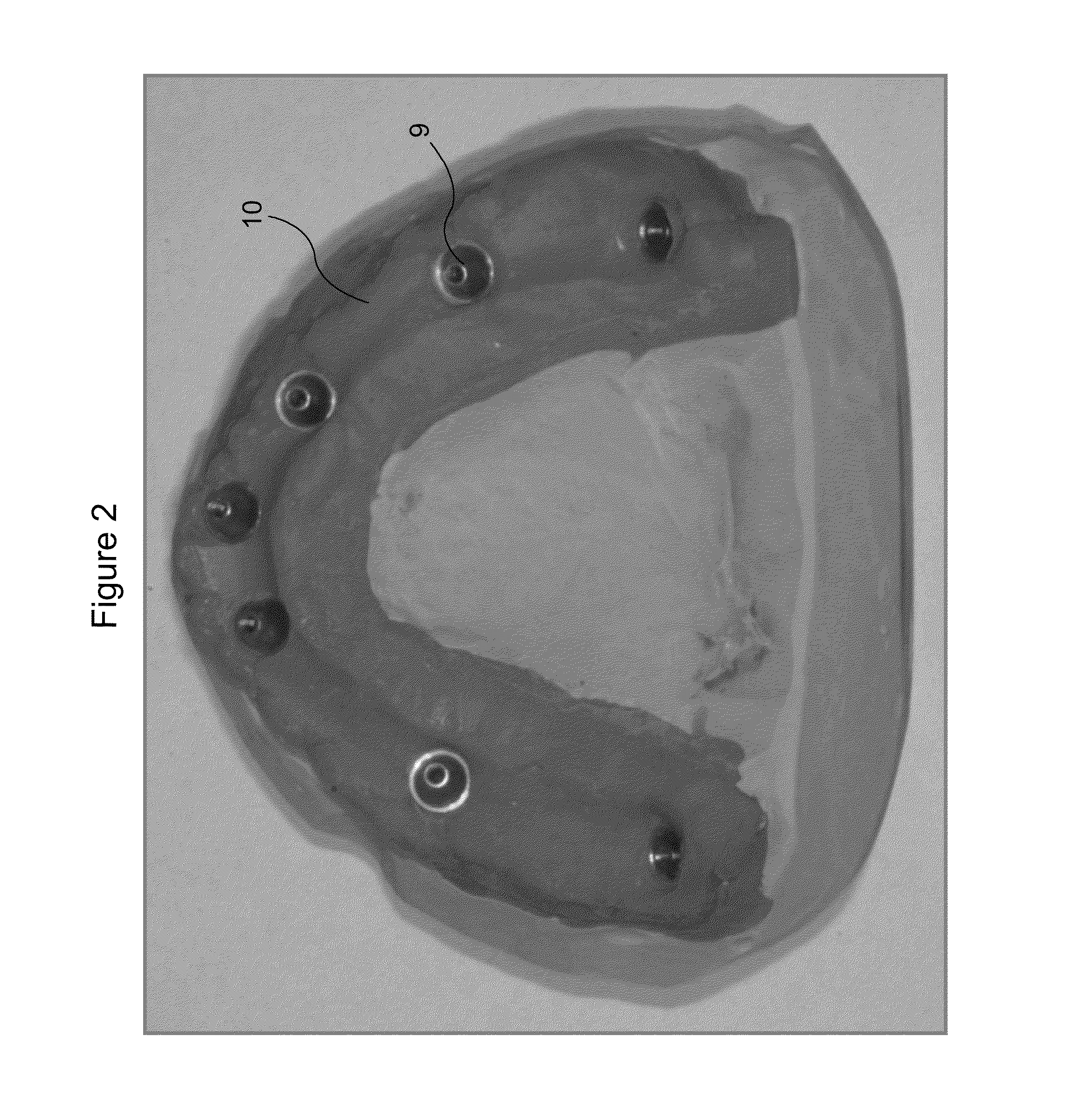Dental prosthesis and method of its production utilizing standardized framework keys and matching premanufactured teeth
a framework key and pre-manufactured tooth technology, applied in the field of dental implants supported prostheses, can solve the problems of inefficient and costly process, high labor intensity, and time-consuming frame modeling by dental laboratory technicians, and achieve the effect of rapid and precise method of prosthesis production and high repeatability
- Summary
- Abstract
- Description
- Claims
- Application Information
AI Technical Summary
Benefits of technology
Problems solved by technology
Method used
Image
Examples
Embodiment Construction
[0041]A step-by-step process showing the methodology and use of the novel structures comprising the invention is depicted in FIG. 1. Referring now to FIG. 2, the process begins as in current practice with the patient first receiving osseointegrated implants. From an impression of the implants including connectors, a working cast or model 10 is produced. As depicted in FIG. 3, a setup using keyway teeth 17 built on the completed working model 10 can be kept in the mouth of the patient for possible adjustments. This completes a prototype of the finished prosthesis. This is similar to current practice but with the use of novel keys and keyway teeth to form the setup, which keys and keyway teeth then are used to construct the vertical struts of the framework in the next steps of the invention. These further steps comprise designing a tooth-supporting framework which includes vertical keys positioned to hold their respective keyway teeth prescribed by the setup.
[0042]Referring now to FIG...
PUM
| Property | Measurement | Unit |
|---|---|---|
| adhesive | aaaaa | aaaaa |
| grinding forces | aaaaa | aaaaa |
| dimensions | aaaaa | aaaaa |
Abstract
Description
Claims
Application Information
 Login to View More
Login to View More - R&D
- Intellectual Property
- Life Sciences
- Materials
- Tech Scout
- Unparalleled Data Quality
- Higher Quality Content
- 60% Fewer Hallucinations
Browse by: Latest US Patents, China's latest patents, Technical Efficacy Thesaurus, Application Domain, Technology Topic, Popular Technical Reports.
© 2025 PatSnap. All rights reserved.Legal|Privacy policy|Modern Slavery Act Transparency Statement|Sitemap|About US| Contact US: help@patsnap.com



